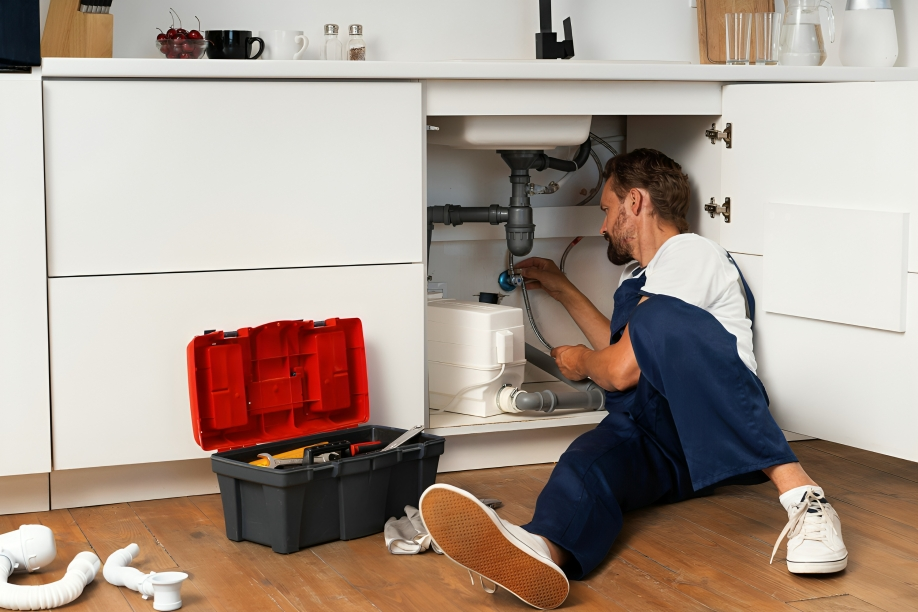Handling a drain overflow can feel overwhelming, especially when it strikes suddenly, and you’re left scrambling for solutions. Whether it’s in your home or sprawling out into your yard, overflow issues can lead to costly damage and are a hassle to manage. This blog post is here to guide you through the necessary steps to alleviate the problem and prevent future occurrences. From identifying the signs of an imminent overflow to enlisting the help of professionals, you’ll gain valuable insights into managing these frustrating situations effectively.
Recognizing the Signs of Drain Overflow
The first step in handling any plumbing emergency is recognizing the warning signs. Sometimes, drains can give subtle hints that an overflow is on the horizon. Gurgling sounds, slow drainage, and unpleasant odors are clear indicators that something is amiss. Ignoring these symptoms can lead to more severe problems down the line, making early detection crucial.
One common culprit is a clog forming deep within the pipes. This can often be due to a buildup of hair, grease, or foreign objects that obstruct the flow of water. Regular maintenance and being mindful about what goes down the drain are practical measures to prevent this. Catching these signs early not only saves money but also spares you the headache of a messy cleanup.
Another sign to watch for is water pooling around drains both inside and outside your home. This can indicate an obstruction or even a break in the piping system, requiring immediate attention to prevent further damage.
Steps to Take During a Drain Overflow Emergency
When an overflow occurs, swift action is needed to minimize damage and restore normalcy. The first step is to shut off the water supply. Locate your main water valve and turn it off to stop the water flow. This step is crucial in preventing further spillage and potential flooding in your home.
Next, clear any standing water as quickly as possible. Use towels, mops, and a wet/dry vacuum to remove water from floors and surfaces. Quick removal prevents water from seeping into flooring and causing additional damage. It’s also a good idea to open windows and doors to ventilate the area and reduce humidity.
Call in professional services without delay. They have the tools and expertise to assess the situation accurately and provide solutions tailored to your specific problem. Involving experts ensures that the issue is handled correctly and reduces the risk of recurrence.
When to Call in Professional Help
Determining when to call in the professionals is vital for resolving overflow issues efficiently. If the overflow is extensive, affecting multiple fixtures, or if you’re unsure of the cause, it’s time to call an expert. Septic tank pumpers in Salt Lake City, for example, can provide specialized services to address complex plumbing issues.
Professional plumbers have access to advanced equipment such as cameras that can inspect the insides of pipes, allowing them to identify blockages or damages that aren’t visible to the naked eye. Their expertise can save you from unnecessary trial and error, ensuring that the problem is resolved quickly and efficiently.
Additionally, if your home insurance policy covers plumbing emergencies, involving professionals can simplify the claims process. An expert’s assessment and repair work are often required for insurance purposes.
Preventive Measures to Avoid Future Overflows
Prevention is always better than cure, and this holds true for drain overflows too. Regular maintenance is key to keeping your plumbing system in top shape. Schedule routine inspections with a reputable plumber to catch potential issues before they escalate.
Another effective measure is to be mindful of what goes down your drains. Avoid disposing of grease, oil, and non-biodegradable materials in sinks and toilets. These substances can accumulate over time, leading to stubborn clogs.
Consider installing drain guards and strainers in sinks and showers. These simple devices trap hair and debris, preventing them from entering the plumbing system and causing blockages.
The Importance of Yard Drainage Solutions
While indoor plumbing often takes the spotlight, outdoor drainage is equally crucial. Poor yard drainage can lead to water pooling, which may seep into your home’s foundation and cause structural damage. Implementing yard drainage solutions like French drains or dry wells can effectively channel water away from your property.
Regularly inspecting and cleaning gutters is another essential task. Blocked gutters can overflow and lead to water damage on the exterior walls and foundation of your home. Ensuring that downspouts direct water away from the house is a small but impactful preventive measure.
Landscaping can also play a role in maintaining proper yard drainage. Planting native vegetation with deep roots can help absorb excess water, while grading the soil ensures water flows away from your home’s foundation.
Conclusion
Handling a drain overflow, whether indoors or in your yard, requires prompt action and informed decision-making. By recognizing the signs, taking immediate steps during an emergency, and knowing when to call in professional help, you can effectively manage the situation and prevent further damage. Remember, prevention through regular maintenance and mindful practices is the best strategy to avoid future overflow issues. Stay proactive, keep your plumbing system in check, and enjoy peace of mind knowing you’re prepared for whatever comes your way.

